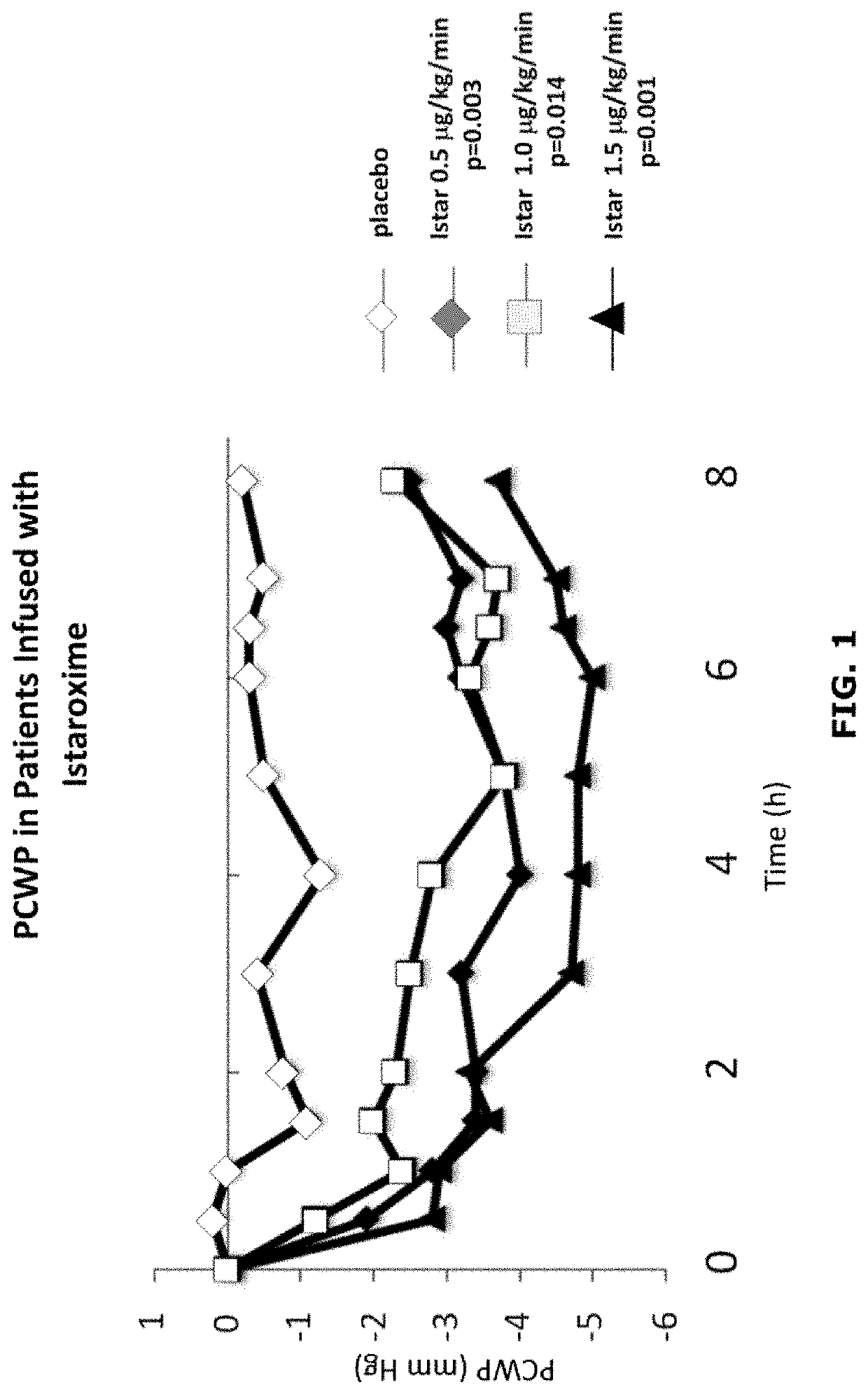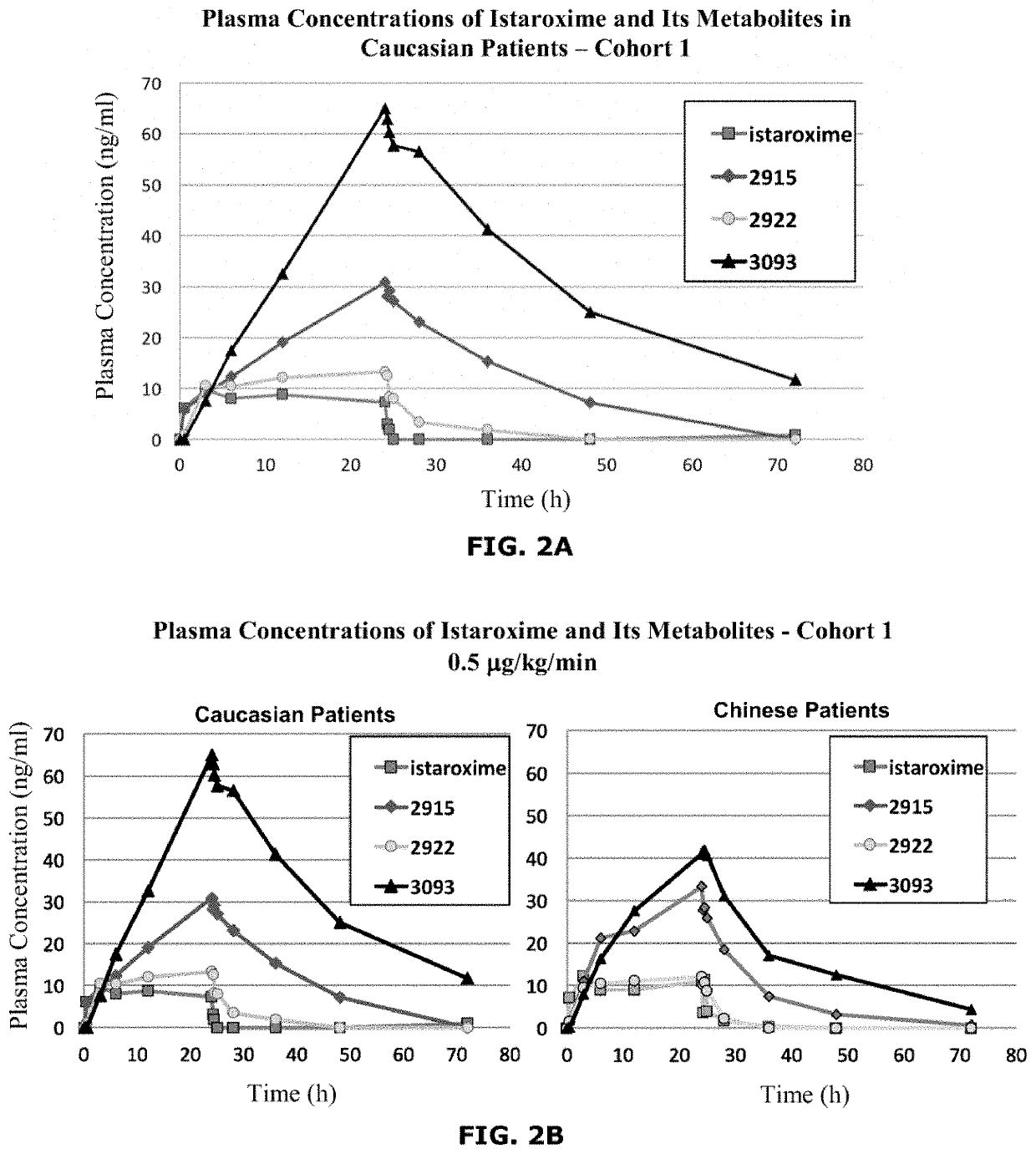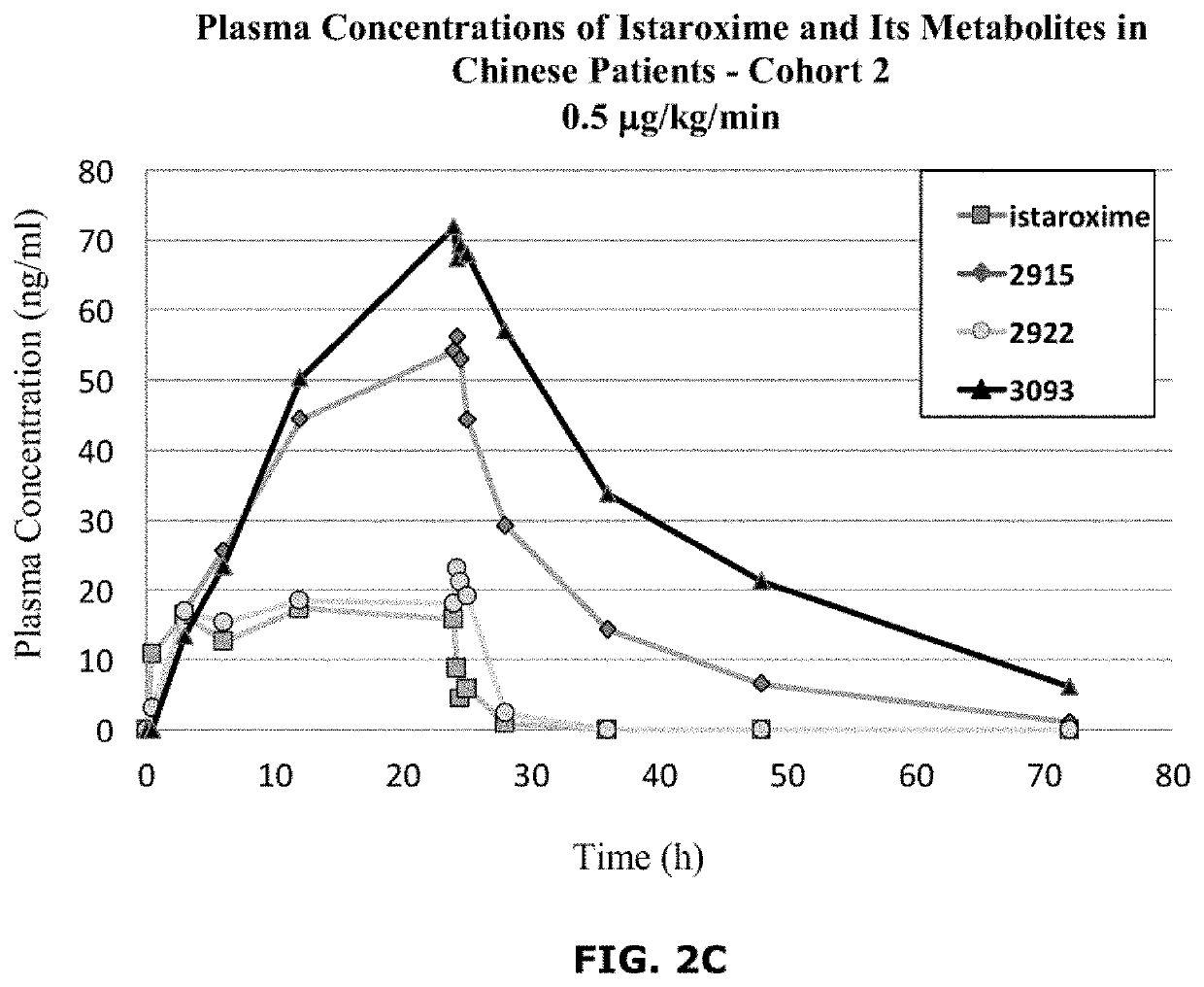Istaroxime-containing intravenous formulation for the treatment of acute heart failure (AHF)
a technology of ahf and a formulation, applied in the field of pharmaceuticals, can solve the problems of reducing the amount of blood available for systolic contraction, poor prognosis of patients with hf, and high hospital admission and mortality rates,
- Summary
- Abstract
- Description
- Claims
- Application Information
AI Technical Summary
Benefits of technology
Problems solved by technology
Method used
Image
Examples
example 1
Preparation of the Compounds of Formula (II) and (III)
Synthesis of PST 2915
Step 1: Hydroboration
[0158]
[0159]To a solution of dehydroepiandrosterone I (30.0 g) in 450 mL of THF maintained under a nitrogen atmosphere and at a temperature of −10° C. was added the complex BH.THF 1M in THF (260 mL). On completing the addition, the temperature was allowed to rise once again to ambient temperature; after 3 h 500 mL of H2O were added and then NaBO3.4H2O (31.4 g). The reaction was left to stir for one night. The precipitate formed was filtered, washed with THF and eliminated. The aqueous and organic phases were Separated, NaCl was added to the aqueous phase and this was re-extracted with THF (3×200 mL). The combined organic phases were anhydrified with NaCl and Na2SO4 and evaporated under reduced pressure to obtain the crude product, which was crystallised by AcOEt / MeOH and then filtered and washed with AcOEt. Approximately 21 g of androstane 3β,6α,17β-triol II were obtained (known product: ...
example 2
Biological Activity of Istaroxime Metabolites
Procedures
Animal Care
[0190]The investigation adheres to the Guide of the Care and Use of Laboratory Animals published by the National Institute of Health (NIH publication No. 85-23, revised 1996) and to the guidelines for animal care endorsed by the participating institutions.
Purification of Dog Renal Na,K-ATPase and Na,K-ATPase Activity Assay
[0191]Purification of renal Na,K-ATPase was performed according to the method of Jørgensen (Methods Enzymol. 1988; 156:29-43). Kidneys were excised from 1-3 year-old male beagle dogs (WuXi AppTec, Suzhou Co., Ltd. 1318 Wuzhong Ave., Wuzhong District Suzhou, 215104 P.R. China) under penthobarbital anesthesia (Import Authorization from Italian Health Ministry 0009171-09 / 04 / 2015-DGSAF-COD_UO-P, 2015). Kidneys were sliced and the outer medulla was dissected, pooled and suspended (1 g / 10 ml) in a sucrose-histidine solution, containing 250 mM sucrose, 30 mM histidine and 5 mM EDTA, pH 7.2 and homogenized. ...
PUM
 Login to View More
Login to View More Abstract
Description
Claims
Application Information
 Login to View More
Login to View More - R&D
- Intellectual Property
- Life Sciences
- Materials
- Tech Scout
- Unparalleled Data Quality
- Higher Quality Content
- 60% Fewer Hallucinations
Browse by: Latest US Patents, China's latest patents, Technical Efficacy Thesaurus, Application Domain, Technology Topic, Popular Technical Reports.
© 2025 PatSnap. All rights reserved.Legal|Privacy policy|Modern Slavery Act Transparency Statement|Sitemap|About US| Contact US: help@patsnap.com



